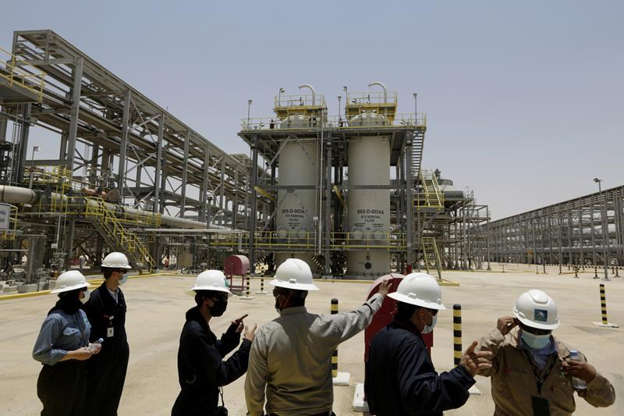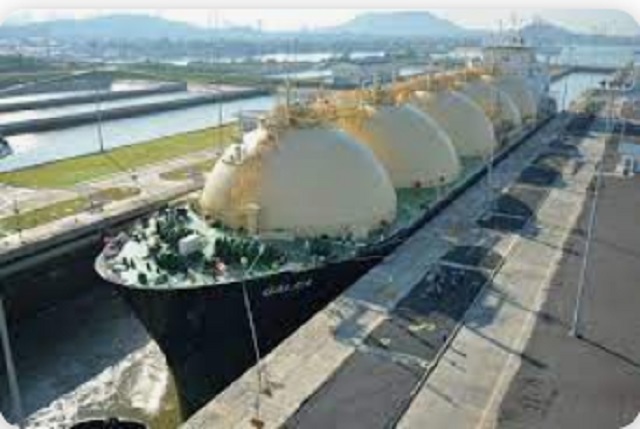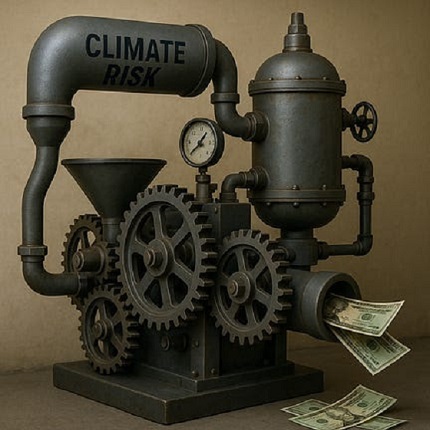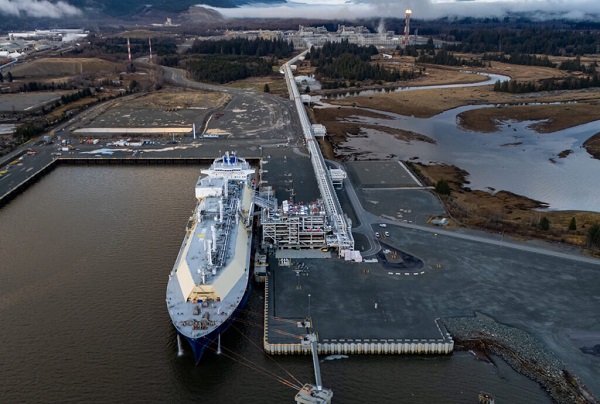Economy
Key energy agencies diverge as demand and oil prices climb

DUBAI, United Arab Emirates (AP) — Leaders of the world’s most consequential energy bodies gathered for a forum Wednesday to discuss the uncertain future of oil as demand rebounds and prices climb, all while a growing roster of nations pledge to transition to cleaner forms of energy.
The forum, which included speakers from the Organization of Petroleum Exporting Countries, the International Energy Agency and the International Energy Forum, presented varying forecasts for oil demand and discussed energy security and market stability.
Yet from the outset, the wider debate on how the world should best transition away from so-called dirty fuels and other sources of carbon emissions that pollute the air played out as speakers gave their remarks.
Major oil-producing nations, like Saudi Arabia and the United Arab Emirates, have long argued that a rapid energy transition away from the fossil fuels that they continue to rely on for revenue will impact global economic growth and hurt the world’s poorest. Those backing a fast-tracked transition insist new investments in energy must go toward expanding existing wind and solar solutions and in funding innovative solutions if the world is to avoid catastrophic global warming levels. On both sides, however, there is agreement that the world is far from reaching sustainable targets as demand for energy grows.
“We are not on track. So how should policy makers respond to this dilemma? The reality is that 80% of the world’s energy needs continue to be met by fossil fuels,” said Joseph McMonigle, secretary general of the Saudi-based International Energy Forum that hosted the symposium. The IEF is the largest organization of energy ministers, with 71 member states, including the United States.
McMonigle said global energy demand has “roared back” to pre-pandemic levels, but that investments in oil and gas are not back to where they were before the COVID-19 crisis.
“Disinvestment in energy supply will not deliver a just and orderly transition and cannot be a response to the climate crisis,” he said, arguing that countries should invest in both greener forms of energy as well as fossil fuels.
The IEF has called for oil and gas investment to reach $525 billion through 2030 to ensure “market balance” despite a slowdown projected in how much demand for oil will grow. The group notes that investment in the oil and gas sector in 2021 stood at $341 billion. Without more financing, the IEF says demand could outstrip future supply within the next five to six years. They say it could also result in switching to more polluting energy sources such as wood and coal.
Others disagree. The International Energy Agency’s executive director has said the world does not need more investments in new oil, gas and coal projects.
From Paris, the IEA’s Fatih Birol did not directly address the comments made by McMonigle, but he echoed the sentiment that the energy transition must happen in an “orderly manner” so that climate targets are met and oil producing economies are seen as part of the solution.
To meet these targets, the world must reduce its consumption of fossil fuels, Birol said, before later adding: “We cannot drop oil and gas tomorrow.”
“The world will need oil and gas for several years to come. However, if we want to reach our climate targets we would need less oil and less coal and less gas than we use today in an unabated format.”
The IEA says that for the world to reach net-zero emissions by 2050, annual clean energy investment worldwide will need to more than triple by 2030 to around $4 trillion. It has also called out the energy sector as the source of around 75% of greenhouse gas emissions, a main driver in climate change.
The IEA estimates that world oil demand is set to expand by 3.2 million barrels per day this year, reaching 100.6 million barrels per day as restrictions to contain the spread of the coronavirus ease. Benchmark crude prices rose by more than 15% in January to cross the $90 per barrel threshold for the first time in more than seven years.
The rebound in demand for oil, combined with a shortfall in energy investments, rising prices and market uncertainty has led to varying energy outlook scenarios. The diverging outlooks by OPEC, the IEF, IEA and others have an impact on how governments choose to formulate their energy policies and decide on production levels as they commit to net-zero pledges.
___
Follow Aya Batrawy on Twitter at www.twitter.com/ayaelb
___
Follow AP’s climate coverage at http://apnews.com/hub/climate
Aya Batrawy, The Associated Press
Automotive
The $50 Billion Question: EVs Never Delivered What Ottawa Promised

Beware of government promises that arrive gift-wrapped in moral certainty.
The pattern repeats across the sector: subsidies extracted, production scaled back, workers laid off, taxpayers absorbing losses while executives collect bonuses and move on, and politicians pretend that it never happened. CBC isn’t asking Justin Trudeau, Katherine McKenna or Steven Guilbeault any questions about it. They are not asking Mark Carney.
Buy an electric vehicle, they said, and you will save the planet, no questions asked. Justin Trudeau and several of his ministers proclaimed it from podiums. Environmental activists, often cabinet members, chanted it at rallies. Automotive executives leveraged it to extract giant subsidies. For over a decade, the message never wavered: until $50 billion in public money disappeared into corporate failures, and the economic wreckage became impossible to ignore.
Prime Minister Mark Carney, himself a spokesperson for the doomsday culture, inherited the policy disaster from Trudeau and still clings to the wreckage. The 2026 EV sales target sits suspended, a grudging acknowledgment that reality refused to cooperate with radical predictions and Ottawa’s mandates. Yet the 2030 and 2035 targets remain federal law, monuments to a central-planning exercise that delivered the opposite of what it promised.
Their claims were never quite true. Electric vehicles were pure good. They were marketed as unconditionally cleaner than conventional cars, a transformation so obviously beneficial that questioning it invited accusations of climate denial. Government messaging suggested switching to an EV meant immediate environmental virtue. The nuance, the conditions, and the caveats were conveniently omitted from the government sales pitch that justified tens of billions of your money into subsidies for foreign EV manufacturing and corporate advancement.
The Reality Ottawa Is Hiding
Research documented the conditional nature of EV benefits for over a decade, yet Ottawa proceeded as if the complexity didn’t exist. Studies from China, where coal dominates electricity generation, showed as early as 2010 that EVs in coal-dependent regions had “very limited benefits” in reducing emissions compared to gasoline vehicles. In Northern China, where electricity generation is over 80% coal-based, EVs could produce lifecycle emissions comparable to or even higher than those of conventional cars. A 2015 Chinese study found that EVs generated lifecycle emissions that were only 18% lower than those of gasoline vehicles, compared to 40-70% reductions in regions with cleaner grids.
Volvo began publishing transparent lifecycle assessments for its first EV in 2019, making it the first major automaker to document the significant upfront emissions from battery production publicly. Their 2021 C40 Recharge report, released during the COP26 climate summit in Glasgow, revealed that manufacturing an EV produces 70% more emissions than building a comparable conventional vehicle. But there are no CBC reports about that. The Volvo report showed that an EV charged on a coal-heavy global grid required 68,000 to 110,000 miles of driving to break even with a conventional car, potentially more than half the vehicle’s usable lifetime. For drivers with low annual mileage in regions with dirty electricity grids, that breakeven point could take six to nine years to reach, if ever.
Battery manufacturing location proved enormously consequential. Production in China, powered by coal, generates 60-85% higher emissions than manufacturing in Europe or the United States. Yet Canadian subsidies flowed to companies regardless of where batteries were made or where vehicles would be charged. The federal government committed over $50 billion without requiring the environmental due diligence that should precede such massive public investment.
The Canadian government never acknowledged Volvo’s findings. Not once. A search of federal policy documents, ministerial statements, and environmental assessments from 2019 forward reveals no mention of the lifecycle complexities Volvo documented. Ottawa’s silence on inconvenient research speaks loudly about how ideology trumped evidence in shaping EV policy.
You want to build a pipeline in Canada. There will be 8 to 10 years of red tape and environmental impact assessments. But if you say you want to make EVs, Laurentian provincial premiers and the feds will bend over backwards. They handed over billions while the economy and social conditions in their cities decayed.
The environmental promise was conditional: clean electricity grids, high annual mileage, manufacturing in regions with low-carbon energy, and vehicles driven long enough to offset the massive carbon debt from battery production. Remove those conditions, and the environmental case collapses. The subsidies, however, remained unconditional.
The Subsidies Flow, The Companies Fail
Corporate casualties now litter the landscape. Northvolt received $240 million in federal subsidies to build a Quebec battery plant before filing for bankruptcy protection in November. Lion Electric, Quebec’s homegrown EV manufacturer, burned through $100 million in government support before announcing massive layoffs and production cuts. Arrival, which secured subsidies for its electric van facility, collapsed entirely, leaving taxpayers with nothing but broken promises.
Stellantis and LG Energy Solution extracted $15 billion, the most extensive corporate handout in Canadian history, for their Windsor battery plant. Volkswagen secured $13 billion for St. Thomas. Provincial governments layered on additional incentives. The public investment dwarfed any plausible return, yet the money kept flowing based on environmental claims the government either never bothered to verify or suppressed from its own documents and reports.
Despite this flood of subsidies and regulatory coercion, Canadian consumers rejected the offering. Even with massive incentives, EVs accounted for only 15% of new vehicle sales in 2024, far short of the mandated 20% target for 2026, let alone the 60% demanded by 2030. When federal subsidies ended in early 2025, sales collapsed to 9%, revealing the limited consumer demand. Dealer lots overflow with unsold inventory. Manufacturers scaled back production plans. The market spoke; Ottawa is only half listening.
The GM plant in Oshawa serves as a cautionary tale. Thousands of jobs lost. Promises of green manufacturing jobs evaporated. Workers who believed government assurances that EV mandates would secure their livelihoods found themselves unemployed as companies redirected production or collapsed entirely. The pattern repeats across the sector: subsidies extracted, production scaled back, workers laid off, taxpayers absorbing losses while executives collect bonuses and move on, and politicians pretend that it never happened. CBC isn’t asking Justin Trudeau, Katherine McKenna or Steven Guilbeault any questions about it. They are not asking Mark Carney.
The Central Planning Failure
The EV disaster illustrates why economies run by political offices never succeed. Friedrich Hayek observed that “The curious task of economics is to demonstrate to men how little they really know about what they imagine they can design.” Politicians and bureaucrats in Ottawa do not possibly possess the dispersed knowledge embedded in millions of individual economic decisions. But they think that they do.
Markets aggregate information that no central planner can access. Consumer preferences for vehicle range, charging convenience, and total cost of ownership. Regional variations in electricity generation and the pace of grid decarbonization. Battery technology improvements and supply chain vulnerabilities. Resource constraints and mining capacity. These factors interact in ways too complex for any cabinet planning committee to comprehend, yet Ottawa presumed to mandate outcomes a generation in advance.
Federal ministers with no experience in automotive manufacturing or battery chemistry presumed to direct the transformation of a trillion-dollar industry. Career bureaucrats drafted regulations determining which vehicles Canadians could purchase years hence, as if they possessed prophetic knowledge of technological development, grid decarbonization rates, consumer preferences, and global supply chains.
The EV mandate attempted to force a technological transition. It was an economic coup. Environmental claims proved conditional at best. Billions in subsidies flowed to failing companies. Taxpayers absorbed losses while corporations extracted rents and walked away. It worked well for the corporations, but the coup failed Canadians and Canadian workers. They are not building back better.
Green ideology provided perfect cover for this overreach. Invoke climate emergency, and fiscal responsibility vanishes. Question subsidies and you’re labelled a denier. Point out that environmental benefits depend on specific conditions, and you’re accused of spreading misinformation. The rhetorical shield, aided and abetted by a complicit media unable to see past its own financial interests, allowed government to bypass scrutiny that should attend any massive industrial policy intervention.
The Trust Deficit
As Canadians learn that EV environmental benefits depend heavily on electricity sources and driving patterns, as they watch subsidized companies collapse, as they discover how thoroughly the promise was oversold and how completely Ottawa ignored contrary evidence, trust in government erodes. This badly needed skepticism will spread beyond EVs and undermine legitimate government functions.
It would be good if future government claims about environmental policy face rising skepticism. Corporations wrapping themselves in green rhetoric may be viewed as con artists. Environmental activists who championed these policies may see their credibility destroyed. When citizens conclude their government systematically misled them about costs, benefits, and basic facts while suppressing inconvenient research, liberal democracy itself suffers. But that may not happen at all in Laurentian LaLa-land or in the Pacific Lotusland.
Over fifty billion dollars are distributed among local and foreign industrialists, while tens of thousands live in tents in Laurentian cities.
The EV debacle demonstrates that overselling policy benefits, suppressing complexity, and using ideology to short-circuit debate produce a backlash far worse than honest acknowledgment of nuance would have. The damage compounds when governments commit billions based on conditional environmental claims they never verified, then remain silent when industry-leading manufacturers publish data revealing those conditions.
The Path Forward
Canada needs a full repeal of the EV mandate and a complete retreat from Ottawa directing market decisions. The EV law must be struck, not merely paused. The 2030 and 2035 targets must be abandoned entirely. No new subsidies for EV production (or any other production). No bailouts for failed battery plants. No additional funds for charging infrastructure. And absolutely no subsidies for conventional or hybrid vehicle production justified by the same environmental complexity that should have prevented EV mandates in the first place.
Let markets determine which technologies Canadians choose. If EVs deliver genuine value for specific consumers in specific circumstances—those with clean electricity grids, high annual mileage, and long vehicle ownership timelines—those consumers will buy them without mandates or subsidies. If hybrids or improved conventional vehicles better serve other consumers’ needs, manufacturers will produce them without government direction.
The aggregated wisdom of millions of economic actors making decisions based on their actual circumstances will produce better outcomes than any planning committee in Ottawa. Some Canadians will find EVs deliver environmental and financial benefits. Others will not. Both conclusions can be correct simultaneously, a nuance Ottawa spent $50 billion refusing to acknowledge.
Markets work because no one has to know everything. Central planning fails because someone must. I wish I could say that Ottawa has learned this lesson the expensive way. Or whether Laurentians will remember it at the next election. Or whether the same politicians and bureaucrats who delivered this disaster will identify the next technology to mandate and subsidize, armed with new promises that reality will eventually expose as conditional at best.
But let’s keep our dreams in check. It seems more likely, given their ideological make-up and propensities for certainty, that low-information Laurentian and Pacific Coast voters will go right for the next green-washed fantasy that the feds and provincial governments will put in front of them, provided it is coiled into a catchy slogan.
Subscribe to Haultain Research.
For the full experience, and to help us bring you more quality research and commentary,
please upgrade your subscription.
Business
Canada Can Finally Profit From LNG If Ottawa Stops Dragging Its Feet

From the Frontier Centre for Public Policy
By Ian Madsen
Canada’s growing LNG exports are opening global markets and reducing dependence on U.S. prices, if Ottawa allows the pipelines and export facilities needed to reach those markets
Canada’s LNG advantage is clear, but federal bottlenecks still risk turning a rare opening into another missed opportunity
Canada is finally in a position to profit from global LNG demand. But that opportunity will slip away unless Ottawa supports the pipelines and export capacity needed to reach those markets.
Most major LNG and pipeline projects still need federal impact assessments and approvals, which means Ottawa can delay or block them even when provincial and Indigenous governments are onside. Several major projects are already moving ahead, which makes Ottawa’s role even more important.
The Ksi Lisims floating liquefaction and export facility near Prince Rupert, British Columbia, along with the LNG Canada terminal at Kitimat, B.C., Cedar LNG and a likely expansion of LNG Canada, are all increasing Canada’s export capacity. For the first time, Canada will be able to sell natural gas to overseas buyers instead of relying solely on the U.S. market and its lower prices.
These projects give the northeast B.C. and northwest Alberta Montney region a long-needed outlet for its natural gas. Horizontal drilling and hydraulic fracturing made it possible to tap these reserves at scale. Until 2025, producers had no choice but to sell into the saturated U.S. market at whatever price American buyers offered. Gaining access to world markets marks one of the most significant changes for an industry long tied to U.S. pricing.
According to an International Gas Union report, “Global liquefied natural gas (LNG) trade grew by 2.4 per cent in 2024 to 411.24 million tonnes, connecting 22 exporting markets with 48 importing markets.” LNG still represents a small share of global natural gas production, but it opens the door to buyers willing to pay more than U.S. markets.
LNG Canada is expected to export a meaningful share of Canada’s natural gas when fully operational. Statistics Canada reports that Canada already contributes to global LNG exports, and that contribution is poised to rise as new facilities come online.
Higher returns have encouraged more development in the Montney region, which produces more than half of Canada’s natural gas. A growing share now goes directly to LNG Canada.
Canadian LNG projects have lower estimated break-even costs than several U.S. or Mexican facilities. That gives Canada a cost advantage in Asia, where LNG demand continues to grow.
Asian LNG prices are higher because major buyers such as Japan and South Korea lack domestic natural gas and rely heavily on imports tied to global price benchmarks. In June 2025, LNG in East Asia sold well above Canadian break-even levels. This price difference, combined with Canada’s competitive costs, gives exporters strong margins compared with sales into North American markets.
The International Energy Agency expects global LNG exports to rise significantly by 2030 as Europe replaces Russian pipeline gas and Asian economies increase their LNG use. Canada is entering the global market at the right time, which strengthens the case for expanding LNG capacity.
As Canadian and U.S. LNG exports grow, North American supply will tighten and local prices will rise. Higher domestic prices will raise revenues and shrink the discount that drains billions from Canada’s economy.
Canada loses more than $20 billion a year because of an estimated $20-per-barrel discount on oil and about $2 per gigajoule on natural gas, according to the Frontier Centre for Public Policy’s energy discount tracker. Those losses appear directly in public budgets. Higher natural gas revenues help fund provincial services, health care, infrastructure and Indigenous revenue-sharing agreements that rely on resource income.
Canada is already seeing early gains from selling more natural gas into global markets. Government support for more pipelines and LNG export capacity would build on those gains and lift GDP and incomes. Ottawa’s job is straightforward. Let the industry reach the markets willing to pay.
Ian Madsen is a senior policy analyst at the Frontier Centre for Public Policy.
-

 Business1 day ago
Business1 day agoCanada Can Finally Profit From LNG If Ottawa Stops Dragging Its Feet
-

 Business2 days ago
Business2 days agoThe Climate-Risk Industrial Complex and the Manufactured Insurance Crisis
-

 Health2 days ago
Health2 days agoThe Data That Doesn’t Exist
-

 National1 day ago
National1 day agoLiberal bill “targets Christians” by removing religious exemption in hate-speech law
-

 Crime2 days ago
Crime2 days agoInside the Fortified Sinaloa-Linked Compound Canada Still Can’t Seize After 12 Years of Legal War
-

 Automotive9 hours ago
Automotive9 hours agoThe $50 Billion Question: EVs Never Delivered What Ottawa Promised
-

 Energy1 day ago
Energy1 day agoLNG NOW! Canada must act fast to prosper in changing times
-

 Health23 hours ago
Health23 hours agoUS podcaster Glenn Beck extends a lifeline to a Saskatchewan woman waiting for MAiD








